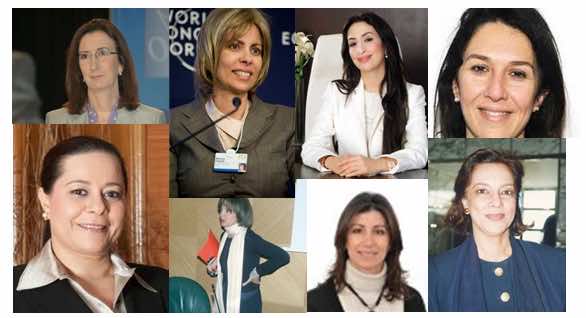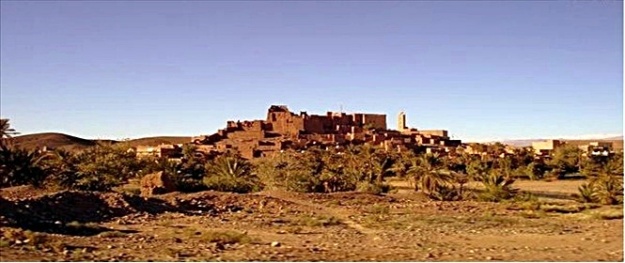The very mention of Tangier evokes images of exotic mystery, fascinating history, dream-like vistas and unspoiled beaches. This Gateway to Africa offers a dazzling mix of cultures from North Africa, Spain, Portugal and France.
And for the kids…where else but Tangier can they “rock the Kasbah,” ride a camel, wrap a snake around their necks, feast like little princes and princesses…all in one adventure-packed day? Excited about the intrigue and temptations, the six of us (my husband, our two girls then ages 8 and 11, my parents and I) hopped the modern ferry from Tarifa, Spain to Tangier, Morocco, and our unforgettable day trip began!
BEFORE YOU GO
Big recommendation: Before you arrive in Tangier, I strongly recommend contacting a reputable tour guide. We found one of the best, Said’s Private Tours. We were sold once we learned that Said: (1) Spent time in New Jersey, and (2) Has provided tours of Tangier to David Bowie and Bruce Springsteen! If he’s good enough for “the Boss,” he’s good enough for us! A tour guide will help you efficiently and safely navigate the city and enhance the local experience.
Tip: I also recommend telling your guide if you plan to shop or prefer to skip it. Said respected our wishes and at no point were we asked to consider buying anything.
OUR FAMILY’S TOP 5 THINGS TO DO ON A DAY TRIP TO TANGIER, MOROCCO
#1 NOW THAT’S CHARMING – WATCH A REAL SNAKE CHARMER DO HIS THING!
We felt like actors in a scene from Raiders of the Lost Ark, standing in amazement just feet from the mystical snake charmer! The girls watched with eyes and mouths wide open as the charmer (and his two tambourine-tapping assistants) worked his magic, and sure enough, his skills and the hypnotic rhythms magically coaxed the snake up and out of its basket!
We knew we would never forget this snake-perience, but to be sure, we each actually posed for pictures with a snake wrapped around our necks! (Shh! – don’t tell anyone – but the snake in our photos was not really alive.) Your guide will find you a charmer of your own just outside the walls of the Kasbah.
Top things to do in Morocco, Day Trip to Tangier - Snake Charmer
Get charmed by a day trip to Tangier, Morocco.
#2 EXPLORE THE CAVES OF HERCULES!
Kids and caves are a natural match. But this cave in Tangier is not just any cave, the Grottes d’Hercule, according to legend, is where the mythical figure, Hercules, used to rest after finishing his 12 labors!
The cave is set among a picturesque beachfront and with a stunningly dramatic opening unlike any we have ever seen. The girls loved this place almost as much as my dad/photographer did. We all learned a fascinating fact: the shape of the cave’s opening is uncannily similar to the map of Africa (if you were looking at the cave from the ocean).
We all delighted in seeing and hearing the crashing waves and being covered in the surf’s mist. It was a true multi-sensory experience. Another surprising treat for the kids was being able to casually shop inside the cave where local artists sell their wares and souvenirs.
Top things to do in Morocco, Day Trip to Tangier - Caves of Hercules
Explore the beautiful beaches near the Caves of Hercules.
#3 HUMP DAY – RIDE CAMELS ALONG THE BEACH!
Imagine in your mind an African scene, and you’ll probably conjure up romantic images of locals riding camels along the sand. Well, when in Tangier, you can put yourself as star of that scene. We did!
After mounting our camels (perhaps the scariest part of the experience), we formed our own caravan along the sandy beach, with the sparkling Atlantic Ocean as the picturesque backdrop. While it may not have been a true camel trek, using a little imagination, my girls thrilled in the exotic feeling of their journey and so did I!
Tip: Keep in mind that the there are no safety harnesses. Be sure your child is able to hold on tightly during the bumpy and jerky ride. My younger daughter was 8 and she was fine, smiling the entire time.
Top things to do in Morocco, Day Trip to Tangier - Camel ride
Taking an exotic camel ride is one of the top things to do in Morocco on a day trip to Tangier.
#4 ROCK THE KASBAH – VISIT THE EXOTIC WALLED CITY!
Probably the most exotic experience of our entire two-week, adventure-filled trip to Spain, Portugal and Morocco was immersing ourselves in the medina, the old walled city. Upon entering the 15th century fortress walls, we were immediately transported into a world so very different than our own!
My girls were fascinated and delighted as they wandered the narrow alleys of the medina, discovering thrills and surprises at every turn. We were able to truly see and feel how the locals work, shop and live in the medina. We peeked into the spectacularly colorful thread stores. We watched the bakers preparing the daily bread. We admired the sparkling silver designs in the jewelry stores. We saw seamstresses hard at work, creating intricate garments right before our eyes. All of this activity was going on amidst the sights, sounds and smells of a world we never knew.
To top it all off, we visited the medieval Kasbah, the walled fortress of the Sultan, which is surrounded by absolutely stunning views of the Strait of Gibraltar. The entire visit was a priceless, eye-opening educational experience for our children.
#5 NOT YOUR LOCAL GROCERY – EXPERIENCE THE MARVELOUS MARKETS OF MOROCCO!
Food shopping on vacation? Really? Oh yeah! In Tangier it’s an experience not to be missed! The Moroccan markets are called souks, and they are jam-packed with local shoppers and sellers in colorful costumes with exotic offerings beyond the imagination. Spices, seafood, meats, cheeses, native handicrafts and anything, and everything, else you can imagine are all available for sale.
Our family market adventure started in the bustling fish market where the noisy bargaining, the sights of unusual sea life, and especially the odors of the seafood literally stunned my girls into silence. Then the kids’ eyes widened as they ventured through the narrow stalls of the meat market with entire slabs and sides of beef, whole chickens hanging from stalls, baskets of mysterious animal organs and, the most precious of Moroccan delicacies, cows’ heads!
Finally, our senses were rewarded as we strolled through the fragrant exotic spice and vegetable market, stopping to examine the goat cheese being sold by the indigenous Berber women in traditional garb. Our girls couldn’t believe this is how Tangier families do their daily grocery shopping, a far cry from a trip to our local grocery store!
Tips: For the ultimate Moroccan shopping experience, start with a coffee in the bustling Grand Socco (Big Square), the gorgeous iconic entrance to the medina. Channel your inner Jason Bourne or conjure up visitors of the past such as Tennessee Williams, Henri Matisse and Jack Kerouac. Soak in the palm trees and beautiful fountain. Then explore the bustling square filled with vendors selling second-hand goods, fruits and spices. For a stunning view, hang out on La Terasse, a balcony across from the police station.
And remember to wear sneakers as the ground in the markets may be wet and dirty.
Top things do to in Morocco, Day trip to Tangier - Market
Wander the aisles of the many different tempting markets in Tangier.
THE ROYAL TREATMENT AT LUNCH – FEAST LIKE MOROCCAN ROYALTY!
After our trip to the fascinating, but unusual souk market, I must admit I was fearful of eating in Tangier and told our tour guide, Said, that I was packing peanut butter and jelly sandwiches to play it safe.
Said laughed and assured me that the Restaurant Hamadi would be more than safe; it would be a delicious and luxurious experience. Boy, was he right! Hamadi is an other-worldly oasis in the middle of the wild hubbub of the city. As we were ushered into a palace-like atmosphere, our senses were immediately absorbed in the inviting smells of spices and the hypnotic melodies of a quartet playing traditional Moroccan music. We were shown to a sumptuous red booth, where we royally reclined on plush pillows and soaked in the ultra-rich atmosphere.
And then the feast began, course after course after course of delectable Moroccan cuisine. Seems my girls were totally into Moroccan food! They dove into every dish and even begged for seconds of the harira soup. My girls discovered tremendous flavorful dishes of couscous with vegetables, tagine meats, piles of olives and tapenades. We ended it all with a cup of mint tea and honey soaked pastries. Mmm…Mmm…Morocco! Lunch was more than a meal; it was truly a royal experience which turned out to be one of my girls’ favorite meals anywhere they have traveled!
WHERE TO STAY
With flights around one hour, Tangier is a manageable day trip from Madrid, Spain. The Tangier airport is just 20 minutes from the center of the city. Consider staying at the conveniently located and delightful Hilton Madrid Airport. Tangier can also be reached via a short high-speed ferry from Tarifa, Spain.
What a day! What an experience! Let Tangier tempt you — you won’t regret it!






